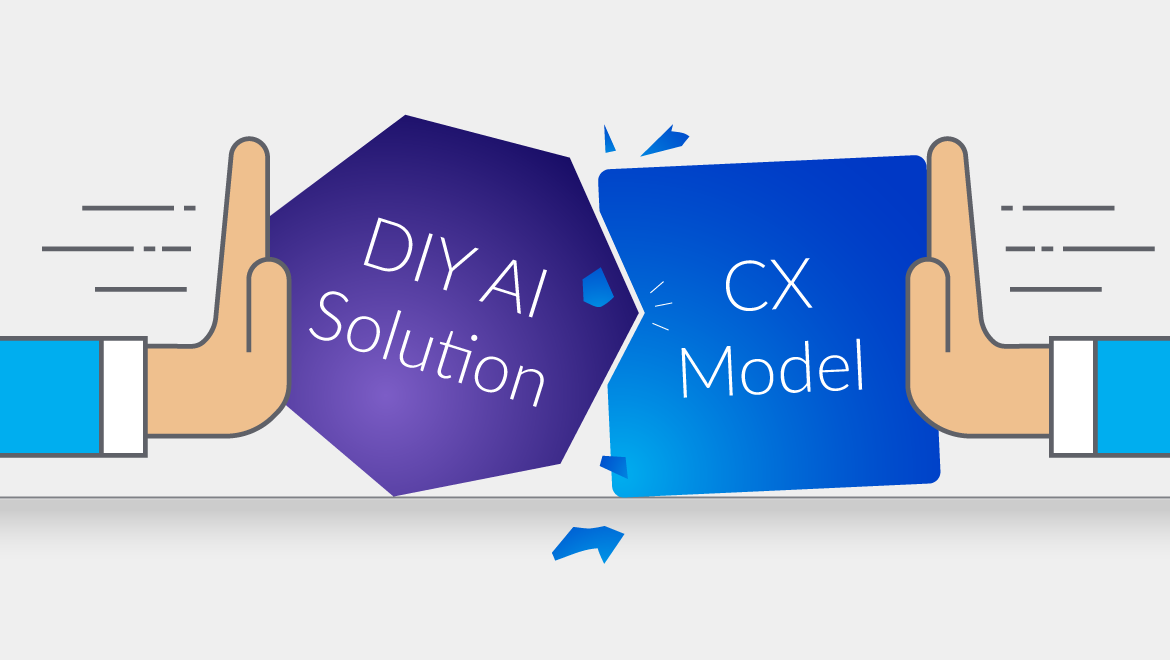“Why don’t we just do it ourselves?” These are the famous last words of every failed AI project. Well, maybe not, but they might of well have been. In a false attempt to cut down costs, have more customization over the end-product, and deploy faster, many companies mistakenly approach Conversational AI deployments the same as other technologies: by taking on the burden in-house.
While building technology with an in-house team certainly has its advantages, AI implementations require an entirely different set of expertise and domain knowledge than traditional IT projects. And when you’re talking about Conversational AI, it can get even more complicated.
But wait, what about DIY Solutions? Isn’t that the best of both worlds?
Sadly, no. DIY solutions are pre-built platforms that provide a “build-it-yourself” customization, without the hassle of actually building the AI system. When using a DIY platform, you’ll probably come across two major roadblocks: Design expertise and maintenance. These are two very important factors to deliver human-like customer experiences for Conversational AI applications, so DIY solutions typically fail or fall short of expectation because of them. You’ll learn more about these roadblocks in a second.
What is a Managed Service?
A managed service involves partnering with an AI vendor who not only closely works with your enterprise to build the application, but also takes over the daily management of the services and technical support to automate and enhance a company’s business operations. Managed services are exceptionally compelling when companies don’t have, or can’t find (or don’t want to because it is not a core competency), the skills, resources and expertise to develop, maintain, and manage a necessary service. AI-based Intelligent Virtual Assistants (IVA) are a perfect use case for a managed service. Here’s why:
Conversation Design
Conversational AI is as much of an art as it is a science. Think about the way you speak, or the way you ask someone questions in order to find out information. There’s a lot more than just building AI models that goes into designing a high-quality virtual assistant. Typical IT projects do not involve team members such as voice and conversation designers who are needed for the development of Conversational AI. Without this expertise, the virtual assistant will feel clunky, robotic, and unnatural.
Tuning and Training
It’s more than just editing a few snippets of code. Tuning and training for Conversational AI applications requires evaluating the conversation flows and data and adding training and tuning the models to improve their accuracy. And what happens when your business launches a new product or service? The conversation flows have to be redesigned to incorporate new conversation paths. Or what about when new jargon or slang is introduced? The models must learn what these are and how to respond for a natural conversation. Effective training to keep conversations effortless takes time and a dedicated, experienced team. With in-house applications and DIY solutions, there is often less experience around these concepts and models required for tuning are often expensive. So while the initial launch may be okay, overtime the application loses its quality.
Domain Expertise
Conversational AI isn’t a solution that enables automation of every customer service use case, nor should it be. When it comes to designing the application in a way that results in the best customer experience, this knowledge must be applied. A managed service provider can demonstrate the expertise that only comes as a result of deep experience across multiple verticals, yielding a tremendous value to companies in their implementations.
If you’re interested in learning more about the difference between DIY solutions and a managed service, check out our full guide here.




